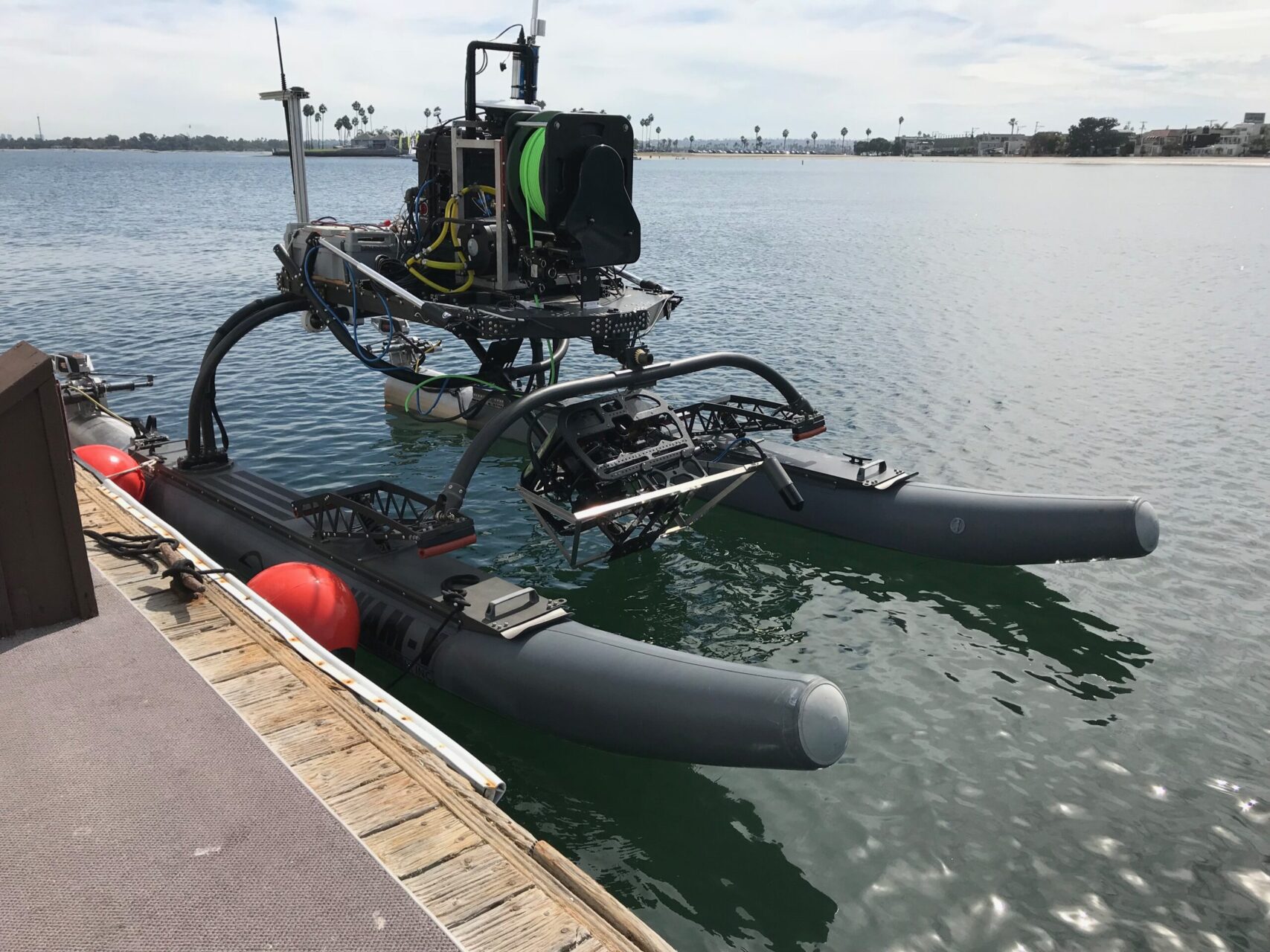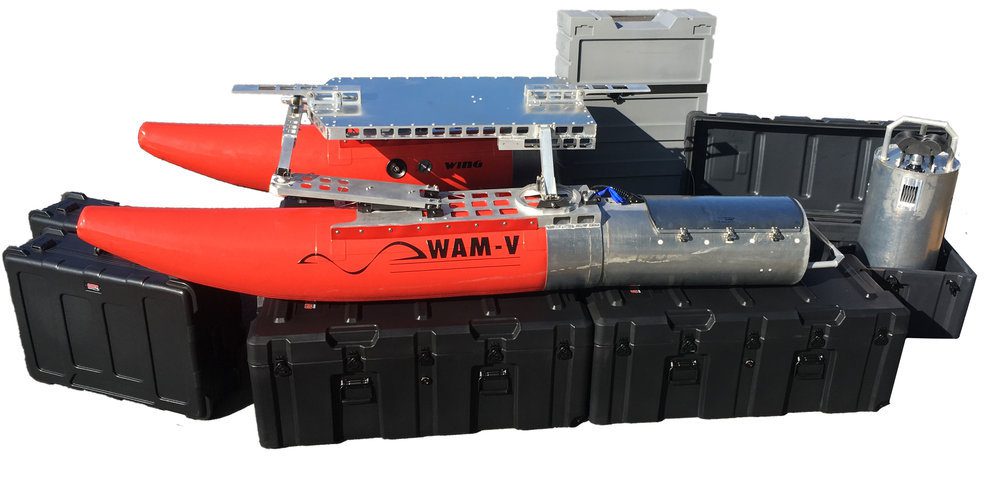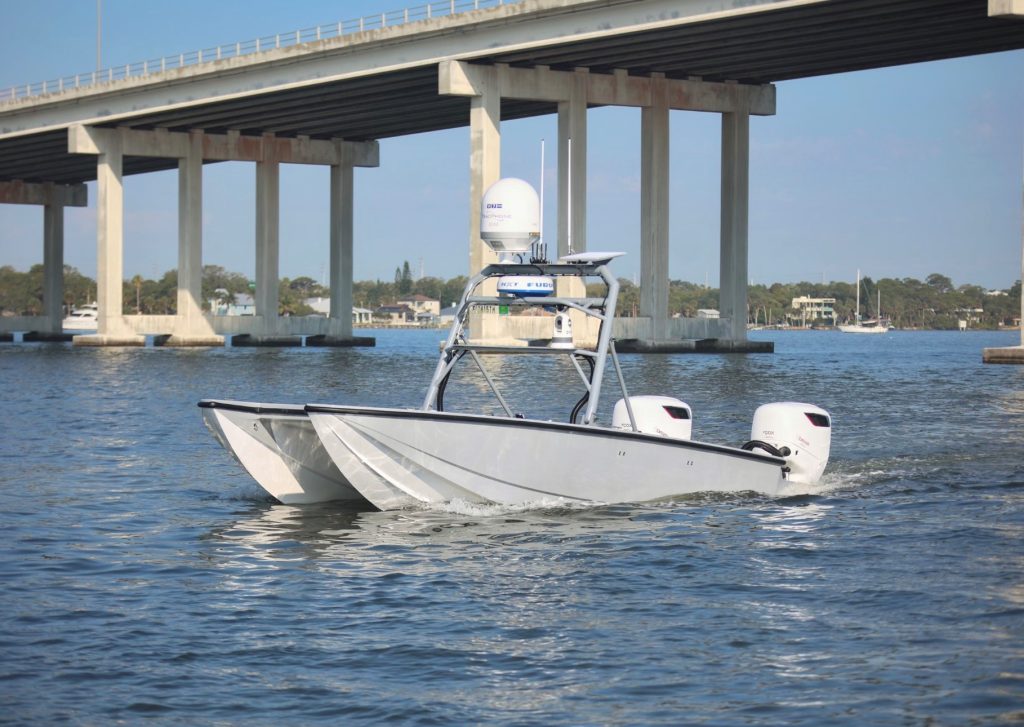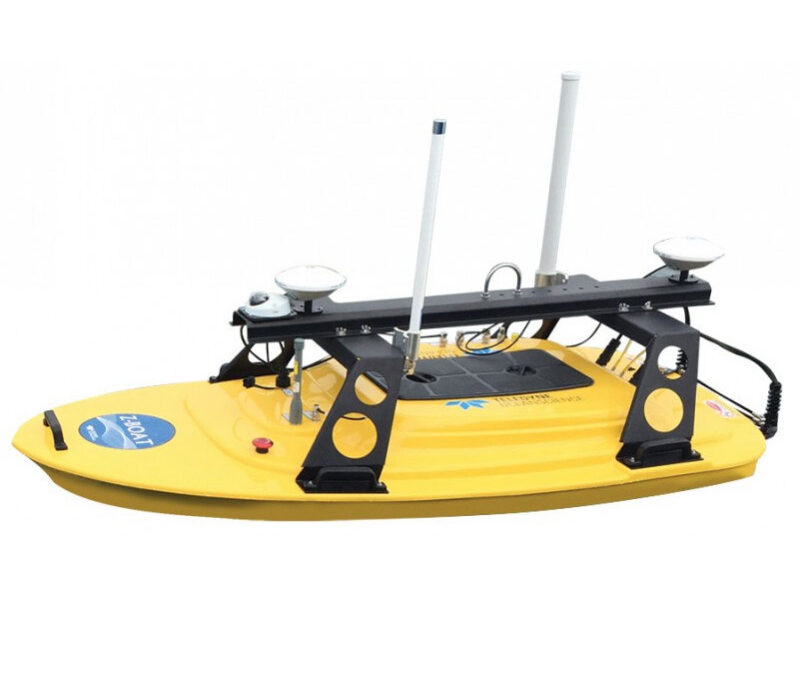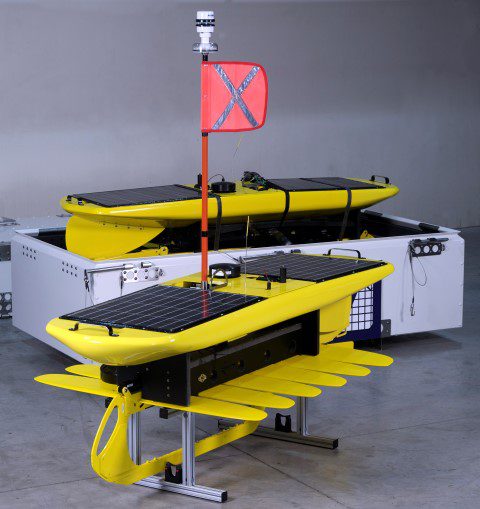BlueZone partners with over 50
world-leading original equipment
manufacturers and systems providers
WAM-V ASV
The most stable, ultra-portable autonomous boat on the market.
WAM-V Technology
The Wave Adaptive Modular Vessel (WAM-V) is an innovative class of watercraft (both autonomous and manned) using unique suspension technology to radically improve seagoing capabilities. The articulating system uses springs, shocks and ball joints to minimize structural loading. The result is an ULTRA-LIGHT, MODULAR vessel that can perform in sea conditions where an ordinary boat of similar size could no longer operate. The incredibly SHALLOW DRAFT and arches contribute to the GANTRY CRANE functionality.
Wave Adaptive Suspension
Unlike conventional boats, the WAM-V’s flexible structure adapts and conforms to the surface of the water resulting in an exceptionally SMOOTH and LEVEL platform. Inflatable pontoons help absorb motion and force. Two engine pods are hinged to the hulls which keep the propellers in the water at all times, further improving vehicle stability and controllability. The 2:1 length-to-beam ratio, along with the articulating suspension systems, makes the WAM-V an exceptionally MANEUVERABLE and STABLE vessel.
Scalable
The WAM-V design works on many scales and can be designed and built to match specific applications. Marine Advanced Robotics, Inc. has designed, tested, manufactured and delivered WAM-V USVs in lengths of 8′, 12’, 14’, 16’, and 33’ along with a 50’ POF (proof of feasibility) and the 100′ prototype Proteus.
Read More:
Deployment of a SeaBotix vLBV ROV from a WAM-V Unmanned Surface Vehicle
Congratulations to University of Newcastle Maritime RobotX Team
University of Newcastle Maritime RobotX Challenge Team
Key Features
Up to 25-hour mission duration
Speeds up to 4.2 knots
Increased module payload capacity
Search and recovery
Hydrography
Deep sea mineral exploration
Marine & Fisheries research
Product Enquiry
Related products
The Devil Ray T24 is a recent addition to the Devil Ray Portfolio. The T24 is quickly proving to be a highly stable platform capable of many different missions.
Read moreZ-Boat for Remote Hydrographic Survey Applications
The Oceanscience Z-Boat 1800 is a fast, reliable, accurate, and surveyor-tested remote survey system. With an echosounder selected specifically for use on a remote vessel, the Z-Boat 1800 can be...
Read moreBy continuously harvesting energy from the environment, Wave Gliders are able to travel long distances, hold station, and monitor vast areas without ever needing to refuel. A unique two-part architecture...
Read moreRelated Articles
Ahead of the Tide: BlueZone’s Landmark IndoPAC 2025 Showcase
Celebrating 25 Years of Sovereign Capability The Indo Pacific International Maritime Exposition stands as the region’s premier showcase for commercial maritime and naval defence innovation—bringing together leaders from defence,...
Read MorePartnering for Performance: BlueZone Supports Kraken Robotics in Advancing KATFISH Capability
BlueZone Group to become Kraken’s Australian Sales Representative, Enhancing Sovereign Support for Cutting-edge Synthetic Aperture Sonar Systems We are thrilled to announce BlueZone Group have signed an agreement...
Read MoreSeeByte and BlueZone Group Forge Strategic Alliance to Strengthen Australian Naval Capabilities
BlueZone Group is proud to announce our appointment as the official Australian representative for SeeByte, a UK-based leader in advanced maritime defence and uncrewed systems technology. This strategic partnership marks...
Read More

